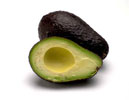
|
|
Training Effective Use of Vision
Awareness and Attention to Detail
Patterns, Letters, Numbers and Words
Activities to Encourage the Use of Vision
Discrimination of objects
Colour can be used to discriminate between objects if the person learns the colour of objects such as food or clothing.
The general shape of an object can give clues to help identification. People can learn the outline or general shape of trees, birds or animals, or the difference between a stool and a bench or table or different pieces of fruit.
Differences in contrast between objects can help even though the detail of the object cannot be seen. People can be taught to use differences in contrast between objects.
Examples are:
- differences in light from doorways and windows
- pathways may be lighter than the ground around them
- objects on the ground such as rocks or holes may not be identified but can be avoided if they contrast with the rest of the ground.
Learn where objects are normally kept so that position can be remembered. It is important that other people do not move objects without telling the person with low vision.
Differences in size of people or objects can help in recognition. Details do not have to be seen to know the difference between a child and an adult, or different kinds of animals.
To assess discrimination of objects, present one familiar object to be named by looking at it without touching it. Then present two and later more objects for the person to pick out the one you name. Later all items can be named by the person. Choose familiar items used in the home, school, cooking, play, work, small animals, food including fruit and vegetables and leaves and flowers from trees. Let the person look as closely as they need. The items are to be named without touching them.
For objects that cannot be brought to the person, walk around the room or community to explore and name objects.
Checkpoint: Name 4 things that can help one to discriminate an object
|
|




